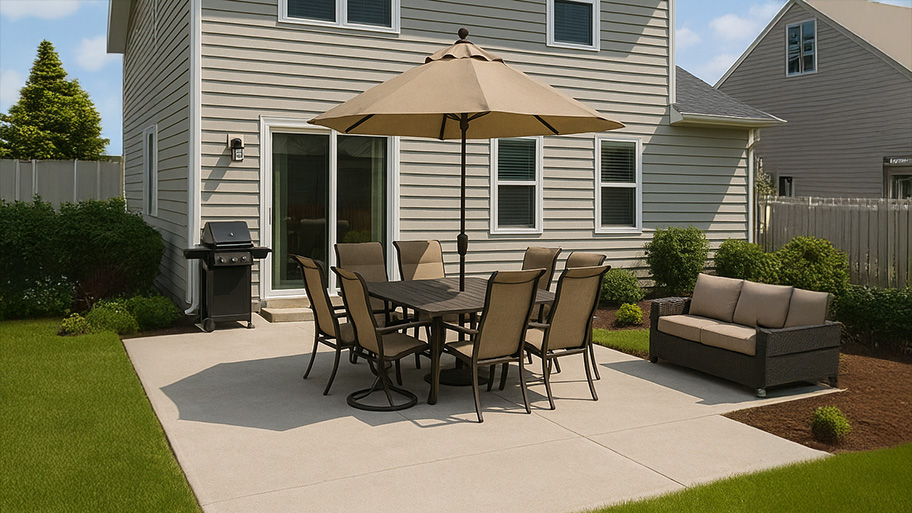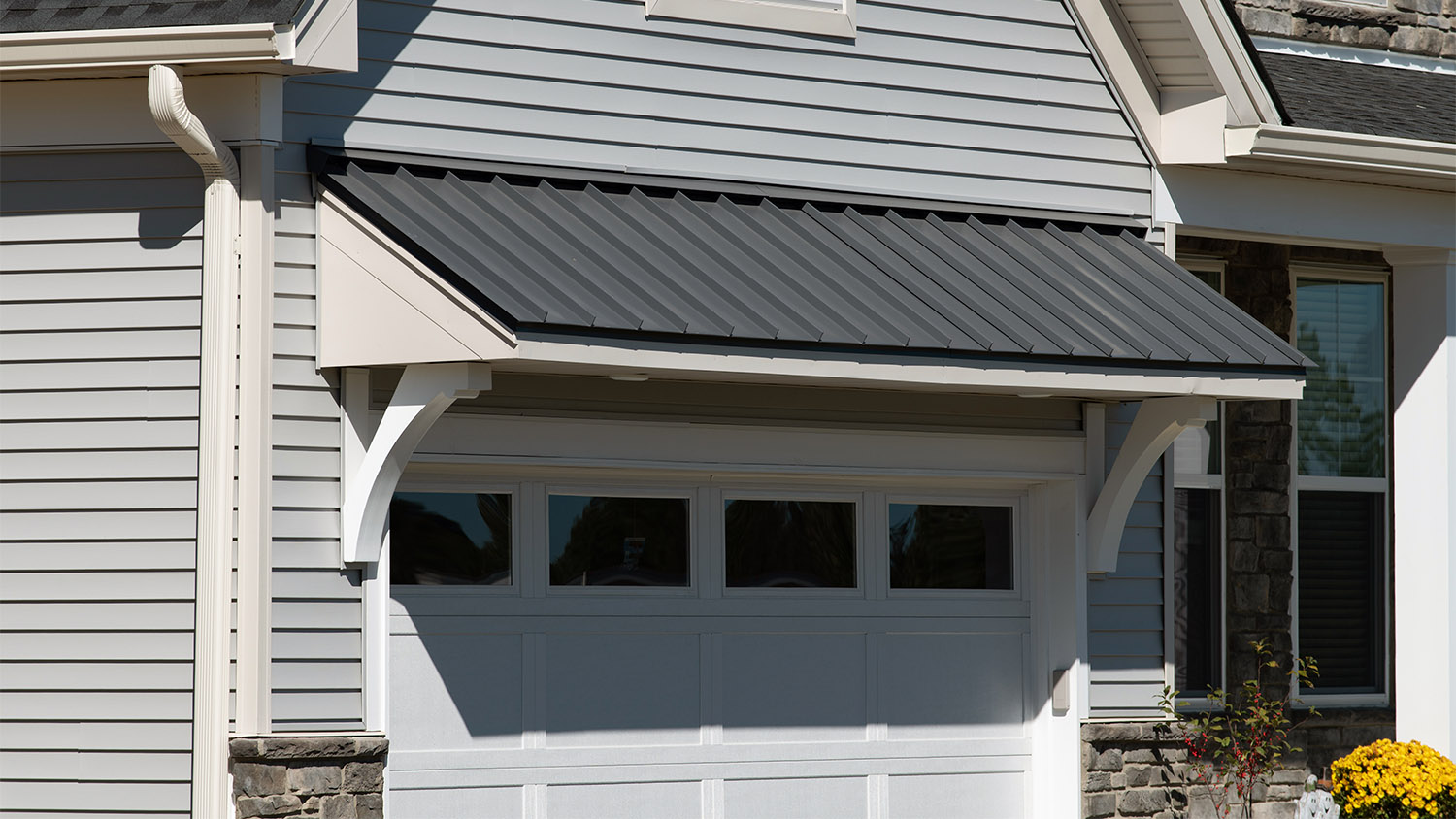
A porch can expand your living space and add curb appeal. Find out what to budget for the cost of a porch on your home with this guide.
Winter patio prep is snow joke


Your backyard patio, packed with bloom-filled planters, pristine pavers, and opulent outdoor furniture, might be your slice of summer paradise. But when the temperatures plummet, you’ll stay cozy indoors with a hot chocolate and a blanket. Before you hole up and hibernate, it pays to learn how to winterize a patio. Follow these steps to save you time and money come spring—reducing the chance of slippery, moldy, or cracked pavers and rust-covered patio sets.

Clean your patio furniture and let it dry fully before overwintering it in your garage, basement, or damp-free shed. If you don’t have storage space and the patio set needs to stay in place, cover it with durable, waterproof, and UV-resistant vinyl or canvas secured with bungee cords.
Protecting your patio furniture prevents rain, snow, and ice from rusting metal sets or rotting wooden tables and chairs, which can make them look shabby and shorten their lifespans.

Overwintering patio planters indoors protects them from harsh conditions and eliminates the risk of terra cotta containers cracking. Can’t bring your plants inside? Protect their roots by moving the container to a sheltered location against a south-facing wall, lifting it off the ground on bricks or pot feet, and wrapping it in burlap, bubble wrap, or another insulating material. Also, turn off and drain water features that are at risk of frost damage.

To store your gas grill for winter, first run it for 15 minutes to burn off any leftover residue. Once it cools, clean the grill inside and out with warm, soapy water, coat the metal parts with cooking oil for lubrication, and safely disconnect the propane tank. Cover or move the grill indoors, but keep the tank outside in a well-ventilated area, away from flammable materials.
Leaving the grill grease-covered and unused for long periods, especially when conditions are damp, makes spring cleaning harder and reduces its longevity.

Repair or replace loose and damaged pavers—which can become a bigger trip hazard if frost heave lifts the soil—and fix small concrete cracks that can widen during the winter freeze-thaw cycle. The average patio repair cost is $1,600, but performing patio maintenance and carrying out low-budget repairs before winter can prevent minor issues from becoming major damage by next spring.

Sweep up leaf litter and other debris on your patio before winter arrives, and use a pressure washer or scrubbing brush with dish soap and water—or 50:50 vinegar and water solution for stronger stains— to clean your patio surface. A buildup of soggy debris left until spring is harder to clean off and can cause staining, encourage mold and mildew growth, and trap moisture that can cause or worsen cracks.

Applying a sealer to your paver, concrete, or natural stone patio before the winter arrives helps protect porous surfaces from excess moisture absorption, which can encourage freeze-thaw cycle cracking. It also increases stain resistance, which is helpful when soggy debris sits on the surface longer under a pile of snow.
If you select a quality sealer and do the job properly, it’s enough to do this every three to five years rather than annually.
Winterizing your patio before the first hard frost is forecast for your region reduces the risk of damage to pavers, concrete, and planters due to the freeze-thaw cycle. It also prevents debris buildup from getting stuck underneath the snow, which can encourage mold growth or stain development.
Most jobs you need to tackle to winterize a patio are DIYable. However, if you don’t have the time or attention to detail, hiring a local hardscaping company is worth it. To reduce costs, you could tackle the easier jobs yourself and leave the trickier, more time-consuming jobs, like sealing patio pavers or repairing cracks in concrete, to a local patio repair pro. For example, the average cost to power wash a patio is $100 to $400, and the average cost to seal pavers is $300 to $550.
From average costs to expert advice, get all the answers you need to get your job done.

A porch can expand your living space and add curb appeal. Find out what to budget for the cost of a porch on your home with this guide.

Thinking of adding a pergola to your backyard space? Find out motorized pergola costs by size, material, and add-on features with this guide.

Flagstone gives your outdoor space a gorgeous, rustic feel. Find out the cost of flagstone per square foot or per ton. Our expert cost guide helps you plan your budget for your flagstone project from walkways to patios to walls.

When you're ready to dive into your concrete patio project, it's best to find an expert who is used to working with complex materials.

Discover the cost of removing a metal awning, including average prices, key cost factors, and expert tips to save on your project.

Know the best materials for decks for different styles, colors, maintenance, climates, wood decking, regular decking, and pool decks.